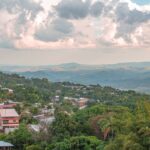Ah, avocados: From toppings for Millenials’ toast to a tortilla chip’s perfect pairing, it’s impossible to ignore their steadily increasing demand. Americans consume nearly 80 million pounds of avocados on Super Bowl Sunday alone. While guacamole might be a regular addition to your rotation of choice dips, confronting its environmental and economic implications might be more difficult to swallow.
“The invisible costs such as water depletion and rapid deforestation of farming avocado are taken on by small-scale producers. These costs have a significant impact on the viability of their businesses, especially when it is not reflected in the price paid by consumers,” said Santiago Machado, country director for sustainable landscapes in Mexico for Rainforest Alliance, a long-standing 1000L partner focused on helping businesses become more sustainable.
Jalisco State is Mexico’s second-largest avocado exporter, and the unregulated clearing of its forested lands to meet market demand for avocados has severely impacted the region’s soil and water quality, ultimately threatening the sustainability of the very product farmers are racing to grow. The development of avocado orchards resulted in at least 12,744 acres of deforestation in Jalisco between 2017 and 2022.
Efforts to mitigate this vicious cycle within the state’s Sierra de Tapalpa landscape, a geographically, culturally and biologically rich region spanning nearly 80,000 square miles, have been noble. Public-private partnerships featuring large agricultural companies have successfully funded reforestation efforts, and more established agro-industrial farms can access bank loans to support investments in drip-irrigation systems that help conserve water. But this type of financing is typically only afforded to those who can meet the strict criteria set by banks and other risk-averse funding sources. Advocates like Machado say that small- and medium-scale producers must be part of the equation to ensure a future for this landscape. But without access to funding, a sustainable future remains out of reach for the region’s more rural farmers.
“You have small-scale farmers that are trying their best to promote sustainable practices, but to transition from a conventional system to a more sustainable one, you’re going to need some investments,” said Machado. “The route to securing those investments for small- and medium-scale producers is more challenging than that of agro-industrial farms.”
Enabling these producers to manage their orchards more sustainably could make an outsized impact. There are over 34,000 avocado growers in Mexico, most of whom cultivate on five acres or less.
With data, sustainability becomes a better investment
Since 2019, Machado and his colleague Gustavo Rojas have been working in Sierra de Tapalpa to rally its communities around a shared vision: long-term economic, ecological and cultural viability for their landscape. Despite being dependent on many of the same resources, these groups often operate separately from each other, prioritizing their own interests without considering the respective impacts on the landscape as a whole.
To realize this vision, local, regional and national stakeholders collaborated to form Comité Local LandScale de Sierra de Tapalpa, a burgeoning collaboration of farmers, government agencies and academic institutions committed to achieving long-term change for their region. In late 2020, the group, known as a landscape partnership, began employing a tool called LandScale to conduct a baseline assessment of their landscape’s ecological, social and economic health.
The assessment included data points about governance, the current state of coordination between sectors, efforts to protect and preserve existing ecosystems and biodiversity, and the production potential and value of agricultural land. One conclusion that stood out: To ensure the long-term sustainability of this diverse landscape, a balance in investment between rural and industrial agricultural actors is essential.
“With the data gathered, we can see the performance of the landscape long term. Through this data collection, we saw that some actors were already taking steps to improve the sustainability of their land,” Rojas said. “But everybody, of course, wanted to know: What’s in it for me?”
With support from the 1000L finance innovations team and LandScale, Rojas is working with the landscape partnership to answer the question. By designing a portfolio of sustainability claims from the collected data, farmers can quantify their efforts and leverage those numbers to apply for previously out-of-reach funding.
Continue reading the story here.
—–
The full story was originally posted on February 1st, 2024, as part of Forbes EQ BrandVoice, a partnership spotlighting organizations championing representation, inclusion & systemic equity.


